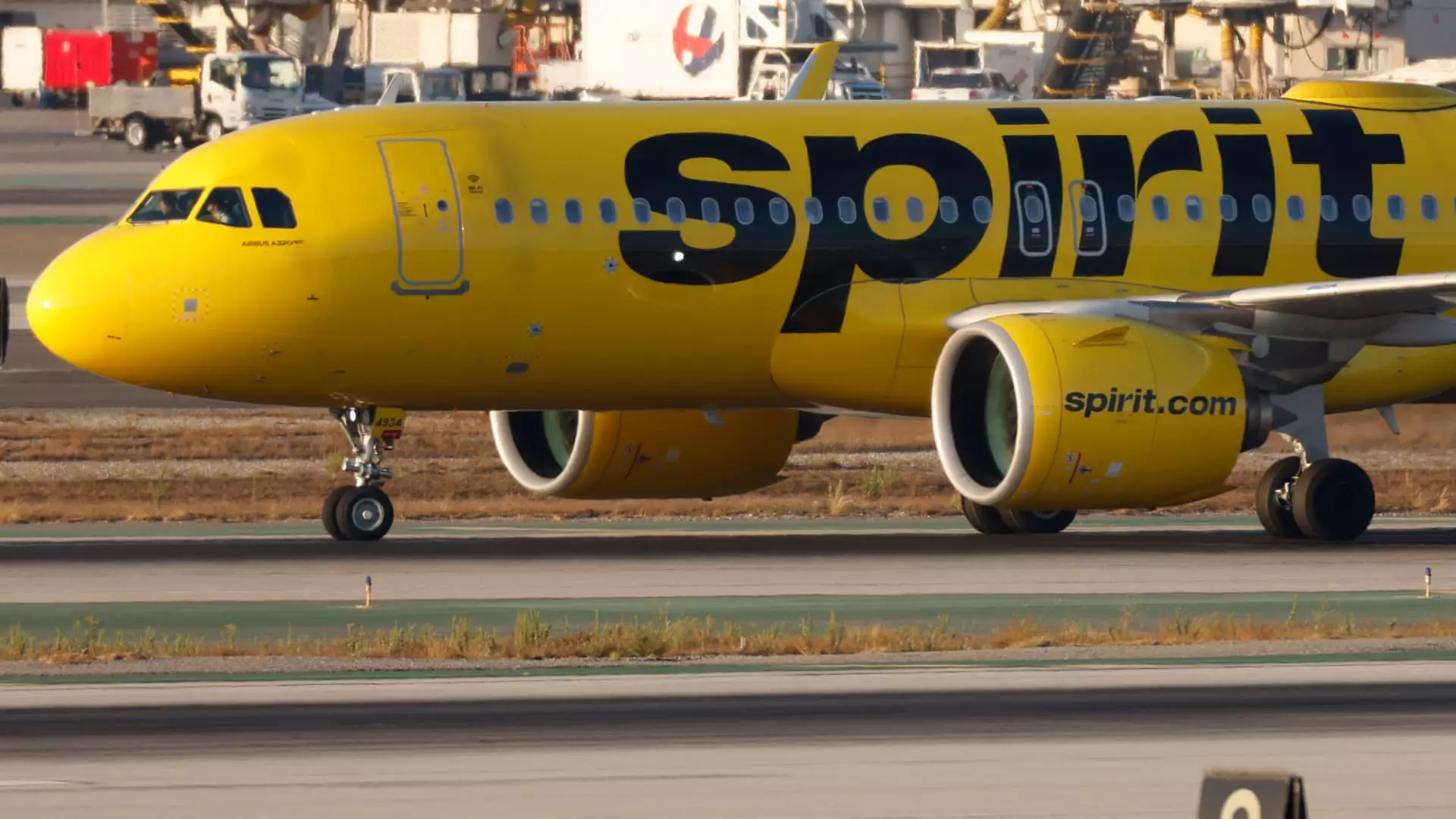Spirit Airlines, a trailblazer in the budget air travel sector, has recently taken a significant and unexpected step by filing for bankruptcy protection. This decision stems from years of operational struggles, industry shifts, and an increasingly competitive market that has made it difficult for the airline to thrive. The recent bankruptcy filing not only underscores the challenges faced by Spirit, but also highlights the broader issues affecting the airline industry as a whole.
In an era when many airlines have adapted to consumer preferences that demand more comfort and inclusivity, Spirit’s rigid low-cost structure has proven detrimental. Despite being known for its no-frills service and low fares, the airline has not posted a profit since 2019. The loss of over $335 million in the first half of this year reveals a systemic failure to align operational practices with the evolving expectations of consumers, particularly post-pandemic.
Adding to its financial burdens was a failed merger with JetBlue Airways, which was blocked by antitrust regulators earlier this year. The attempted acquisition was intended to provide Spirit with additional resources and market presence, but its failure has exacerbated the airline’s financial situation. Simultaneously, the company’s shares fell by more than 90% in 2023, indicating a dramatic loss of investor confidence.
On Monday, Spirit Airlines announced that it has entered bankruptcy protection, a move that was accompanied by a prearranged deal with its bondholders. This strategic decision includes securing $300 million in debtor-in-possession financing, intended to stabilize the airline as it restructures. The assurance that vendors and aircraft lessors will not be negatively impacted offers some relief, but the impact on employees and the overall business model raises questions about the airline’s future.
In a letter to customers, Spirit’s CEO Ted Christie emphasized that operations would continue despite the bankruptcy filing, allowing customers to book tickets and utilize existing loyalty points. This attempt to reassure consumers reflects an understanding that their trust and continued patronage are vital during this turbulent time. However, it remains to be seen how effective these reassurances will be in restoring confidence among both customers and investors.
Spirit’s operational struggles have been further compounded by an engine recall that led to the grounding of multiple aircraft. Rising operational costs and reduced fare prices, alongside the aforementioned failed merger, has created a perfect storm that the airline could not weather. The significant reduction in air travel demand and a surge in costs following the pandemic further illustrate the industry’s volatility, leaving Spirit scrambling to stabilize.
To bolster its cash reserves, the airline made the difficult decision to sell dozens of jets, including 23 Airbus aircraft, generating $519 million. This short-term fix provides liquidity but does little to address the long-term restructuring needed for sustainable operations. Additionally, Spirit is anticipated to furlough hundreds of pilots, a move indicative of ongoing scale-back operations that will only complicate recovery efforts.
The question surrounding Spirit Airlines is whether it can successfully emerge from bankruptcy and re-establish itself as a strong competitor in the budget airline space. Analysts suggest that further downsizing may be necessary to manage costs and streamline operations. The unmistakable shift in consumer preferences away from bare-bones services toward more inclusive options poses a substantial challenge.
Historically, Spirit has thrived by catering to budget-conscious travelers; however, a growing number of customers appear willing to pay more for enhanced travel experiences. In a bid to address this trend, Spirit has recently introduced bundled fares that include essential services, thereby embracing a more competitive pricing strategy in hopes of attracting a broader audience.
While Spirit Airlines has undoubtedly shaped the budget travel landscape, its future hinges on its ability to adapt to significant operational challenges, market dynamics, and changing consumer expectations. As the airline works through its restructuring process, the lessons learned from this experience will not only impact Spirit but may also ripple throughout the entire airline industry, prompting others to rethink their strategies in a rapidly evolving market. Whether Spirit Airlines can capitalize on these lessons remains to be seen, but the turbulence it has faced offers valuable insights into the complexities of the air travel sector.

